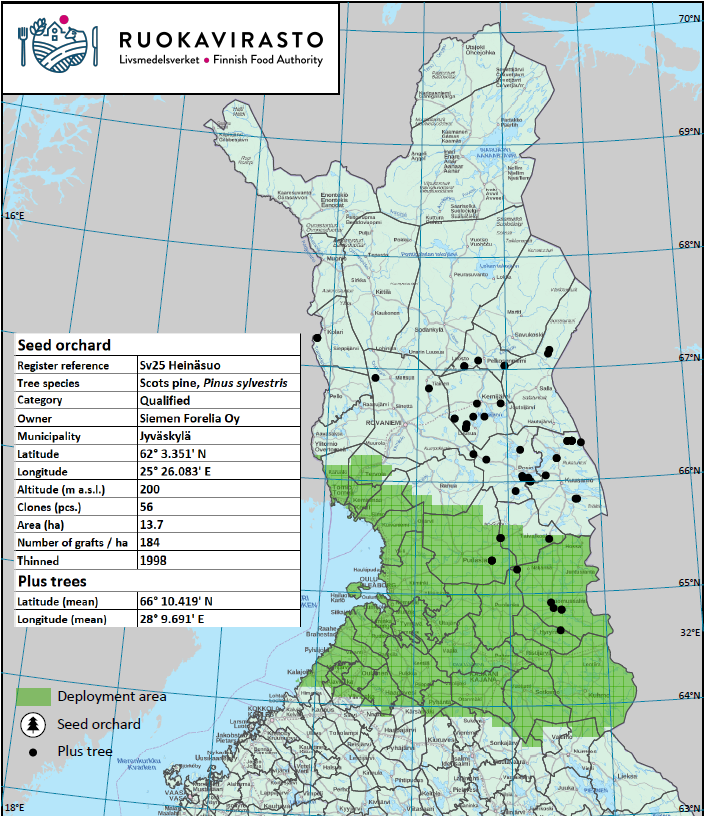Ruokavirasto announces new deployment areas for bred pine seeds and seedlings
From the spring of 2017, new deployment areas taking account of global warming forecasts will be introduced in the trade of seeds collected from pine seed orchards and the seedlings grown from them. The Finnish Food Authority has marked the new pine deployment areas in the basic material register and has published maps of the deployment areas on its website.
Scientific basis for the deployment areas
The Natural Resources Institute Finland (Luke) has determined new deployment areas for pine seed orchards. The deployment areas are based on models, jointly prepared by Finnish and Swedish researchers, which predict the success of pine provenances in different climate conditions. The models used extensive field testing and climate data. From the perspective of the survival of trees, the climate conditions during the years immediately after forest cultivation play a key role. This has been taken into account in the definition of the deployment areas, by applying the predicted thermal time for the year 2020 in survival modelling. Pine stands cultivated in the next couple of years will grow in a climate that is warmer than now, so tree growth was modelled using the prediction for 2050. The scientific basis for the definition of the deployment areas is presented in the Luke report ”Männyn siemenviljelysaineiston käyttöalueen määrittäminen” (Determination of the deployment area of pine seed reproductive materials), http://urn.fi/URN:ISBN:978-952-326-270-6, and the transfer effect models are described in a scientific article published in the journal, Silva Fennica https://doi.org/10.14214/sf.1562.
The colour of the deployment area indicates the degree of breeding
Deployment areas have been defined for all registered pine seed orchards (of which there are 102). The best individual trees have been selected for the seed orchards from natural forests, and cross-bred to produce seeds with excellent genetic qualities. Forest reproductive materials from the seed orchards belong to the categories ‘qualified’ or ‘tested’. Materials in the ‘qualified’ category provide 10-15% and materials in the ‘tested’ category provide 20-25% higher yields in their deployment areas than materials from local stands. The better quality of materials in the ‘tested’ category has been verified using progeny tests. The deployment area of materials in the ‘qualified’ category is indicated in green on the maps, and that of materials in the ‘tested’ category in blue.
Forest tree nurseries grow around 50 million pine seedlings each year. Because pine seeds from seed orchards are also used for forest regeneration by sowing, numerous forest owners and the entire national economy benefit from the use of bred reproductive materials.
EC plant passport/seed or seedling label
Pine deployment areas are indicated on the seed and seedling labels as links to an Ruokavirasto website, where buyers and users of forest reproductive materials can check the deployment area for the seed orchard in question.
